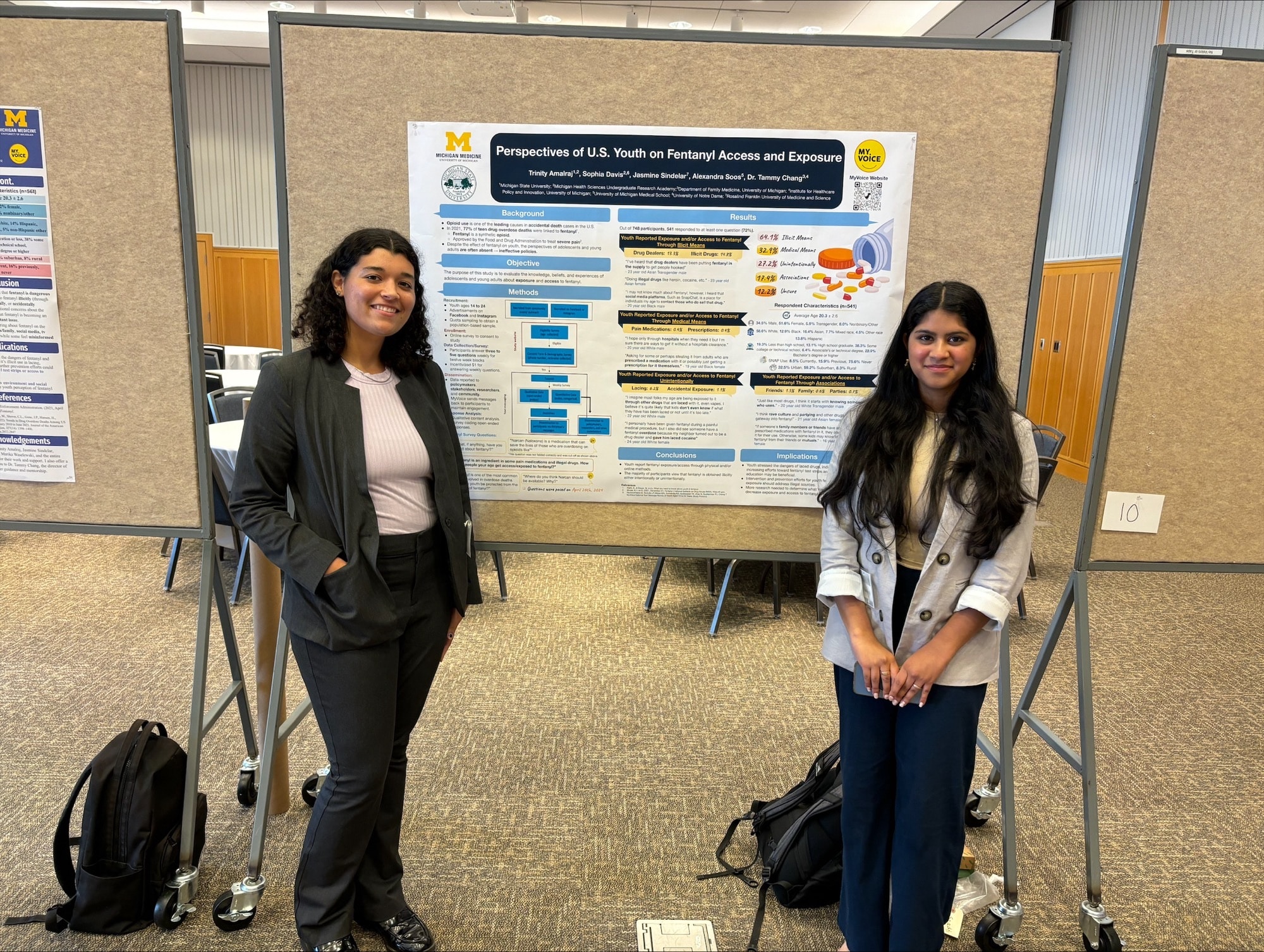Trinity Amalraj and Sophia Davis not only dip their toes into research, they also find mentors, community and confidence with their project involvement.
Thanks to their work with MyVoice members and survey data, college students Trinity Amalraj and Sophia Davis have discovered unique research interests, powerful mentors, and bolstered academic confidence. Both students were enrolled this summer in the University of Michigan’s Health Sciences Undergraduate Research Academy (URA).
As part of that 10-week program, Trinity and Sophia worked with data examining youth access to Fentanyl, gathered through the nationwide text message-based survey that engages 14–24-year-olds on issues relevant to their lives.
Sophia and Trinity recently presented various aspects of the research data at several research events – one at U-M and another at Michigan State University.
Both students participated in URA’s Michigan Health Sciences Summer Institute Research Symposium at the end of July, presenting on “Perspectives on Fentanyl on U.S. Youth.” This event showcased the research projects and findings of URA students.
“I was simply excited to talk about our research because I knew it so well and I am so excited about what we discovered about what youth had to say about Fentanyl,” said Sophia, who is pursuing a biochemistry degree at the University of Notre Dame. “The best part was answering people’s questions and hearing their reactions. Many people came up to Trinity and me to tell us how much they loved the presentation and how well we had put it together.”
Trinity, who is pursuing a bachelor’s degree in human biology with a minor in bioethics at Michigan State University, also did an additional talk with her poster, “Perspectives of Youth on Fentanyl Access and Exposure” at MSU’s Mid-SURE event, which also occurred at the end of July.
“I had the opportunity to have engaging, insightful conversations with people from all over the country about Narcan access and how Fentanyl is impacting youth beyond just exposure and access,” she said. “I received overwhelmingly positive support for the research I was presenting, and many people endorsed the impact that this type of research can have on improving policies for youth.”
Trinity said her experience working with the MyVoice team has been ‘extremely impactful.’
”The supportive environment during meetings has allowed me to feel open to offering feedback, but also to feel free to ask for help,” she said, adding that MyVoice Director Tammy Chang, MD, MPH, MS, associate professor in the Department of Family Medicine, served as a supportive mentor on not just the work she was able to accomplish in three months, but also instilled in her the confidence she’s gained while pursuing research opportunities outside of her personal research interests in menstrual health equity and sexual health.
Sophia described the MyVoice team as welcoming from day one.
“I loved working with the MyVoice team,” she said. “I knew I had found a research environment that fosters both community and challenges me to think in a different way.”
Chang said that part of MyVoice’s goal is to not only engage young people in the nationwide survey but to make them a part of the research process too.
“We were thrilled to have Trinity and Sophia join us as collaborators and youth experts,” she said. “They both did an incredible job of presenting their work. What’s so valuable about engaging young people like Sophia and Trinity is their fresh perspectives on what they and their peers think about subjects that impact their health. Research should engage young voices and through MyVoice, we do just that.”
.

